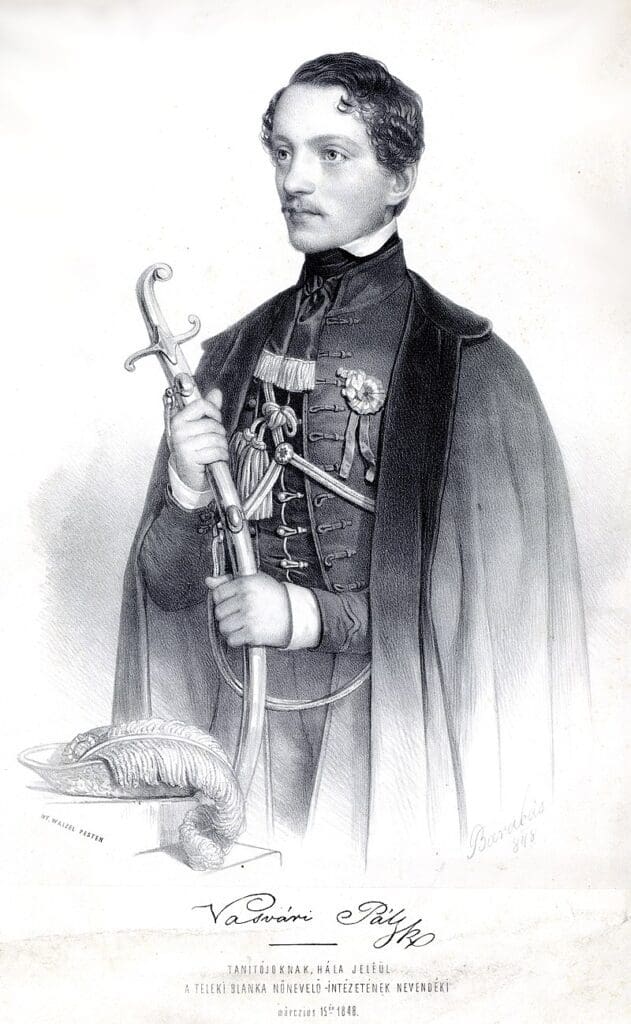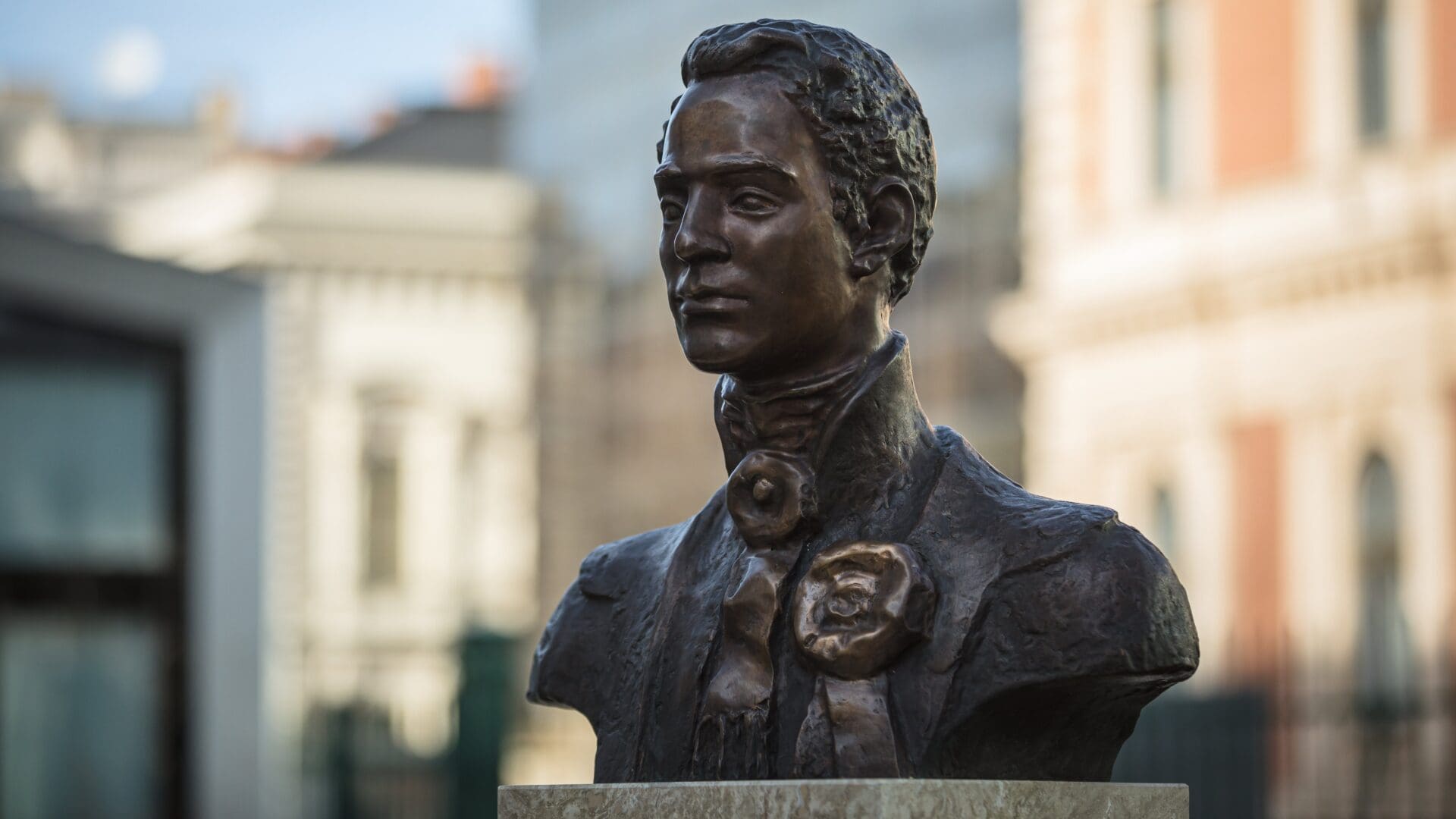It has been 174 years since Major Pál Vasvári and his Rákóczi Free Army were massacred near Havasnagyfalu (today Mărișel in Romania), on 6 July 1849. Despite all resistance forces, the memory of the young revolutionary and his fellow martyrs is a powerful cohesive force for the dwindling Hungarian community of the Kalotaszeg (Țara Călatei) region to this day.
Pál Vasvári (1826–1849) was one of those fiery young men who played a significant role in the 1848–49 Hungarian Revolution and Freedom Fight, one of the most decisive events in Hungary’s modern history and a pillar of its modern national identity. The political elite of the Kingdom of Hungary wanted both to win individual liberties for its citizens and to wrest the possibility of national autonomy from the Habsburg court in Vienna. The success of this effort is clearly demonstrated by the fact that Austrian Emperor Franz Joseph was only able to suppress the Hungarian struggle for freedom with the help of a vastly superior force, the army of the Russian Tsar.
Pál Vasvári was an active participant in the revolutionary events from the very beginning and was one of the leading figures of the ‘March Youth’ of 1848.
After the young Hungarian poet Sándor Petőfi, the Austrians considered him the most dangerous ‘agitator’. He played a major role in the composition of the text of the Twelve Points concluding the Hungarian demands that came to light on 15 March; he was the first speaker at the National Museum that afternoon; and he was also present at the release of Mihály Táncsics, Hungarian writer and political prisoner, held at the József Barracks in the Buda Castle.
Later Vasvári became a secretary in the newly established independent Hungarian Ministry of Finance. When the Austro–Hungarian foil erupted into armed conflict in the early autumn of 1848, Vasvári, who was otherwise a historian, writer, and teacher, became an active participant in the fighting, too. In early 1849, he organised and commanded a free army, which bore the name of Ferenc Rákóczi, Prince of Transylvania and the leader of the Rákóczi War of Independence (1703–1711).
On 2 May, he arrived with his troops in Bánffyhunyad (today Huedin), Transylvania with the intention of eliminating the marauding Wallachian Vlach (Romanian, in Hungarian oláh) forces, who were fighting alongside the Austrians to crush the Hungarian Freedom Fight. The Vlach troops, under the command of Transylvanian Romanian lawyer and Vlach leader Avram Iancu, had been terrorising the Hungarian villages in the area,
many of which were looted and burnt, and the population brutally massacred.

Under the leadership of Polish General Józef Bem, the Hungarian troops achieved significant successes in the spring of 1849. Most of Transylvania had been liberated, and after the Austrian imperial armies were driven out of the area, only the fortresses of Gyulafehérvár (Alba Iulia) and Déva (Deva), and the 40,000-strong force of the aforementioned brigand leader Avram Iancu, remained in action, retreating to the Apuseni Mountains and attacking from there. General Bem decided to eliminate the rebel oláh forces as well: thus, as planned, on 4 July Vasvári’s brigade set up camp on the Havasnagyfalu (Mărișel) plateau. At the same time, Józef Bem travelled to Nagyvárad (today’s Oradea, Romania), where he met Lajos Kossuth, statesman and governor-president of the Kingdom of Hungary during the revolution, who informed him that Russian troops were going to invade the country upon the request of Austrian Emperor Franz Joseph. Therefore, Bem called off the manoeuvre to crush the oláh forces—orders were sent to all the troops involved in the operation to withdraw. However, the unit led by Pál Vasvári never received the orders. By the morning of 5 July, the oláh forces had surrounded the attacking troops of Vasvári, and on 6 July (although according to some historians, only on 13 July),
more than 400 members of the Rákóczi Free Army and almost the entire general staff, including Major Pál Vasvári, were brutally murdered.
The Romanians collected and buried their dead, while the Hungarian bodies were simply thrown one atop the other. They turned to dust unburied on the battlefield, which is now believed to be covered by the 90-metre-deep water of the artificial lake of the Béles Hydroelectric Power Plant.
However, the martyr Pál Vasvári and his Free Army have not been forgotten by posterity. The diminishing Transylvanian Hungarians of the region of Kalotaszeg, who have suffered due to the Treaty of Trianon as well as under Communist Romania, and who were, and are still, the victims of covert assimilation efforts that have been going on since the regime change,
cling to the memory of the ardent young revolutionary through thick and thin.
In 1995, a headstone was erected in the village of Körösfő (Comuna Izvoru Crișului) in memory of the Major and his companions, who were massacred on the border of Kalotaszeg on 6 July 1849. Although Romanian nationalists have been doing everything in their power to have the monument removed, the headstone still stands today. At the initiative of László Péntek, an enthusiastic Vasvári researcher, a museum and memorial room have also been opened in Körösfő, where visitors can learn about the life and work of the young revolutionary and freedom fighter, and especially the circumstances of his death.
Every year, on 6 July, a wreath-laying ceremony is held at Lake Béles,
the site of the battlefield, despite the fact that Romanian nationalist groups have repeatedly threatened the gathering.
To this day, the memory of Pál Vasvári and his fellow martyrs is a cohesive force among the Hungarians of Kalotaszeg, who are fighting a huge battle for survival.
Related articles:








